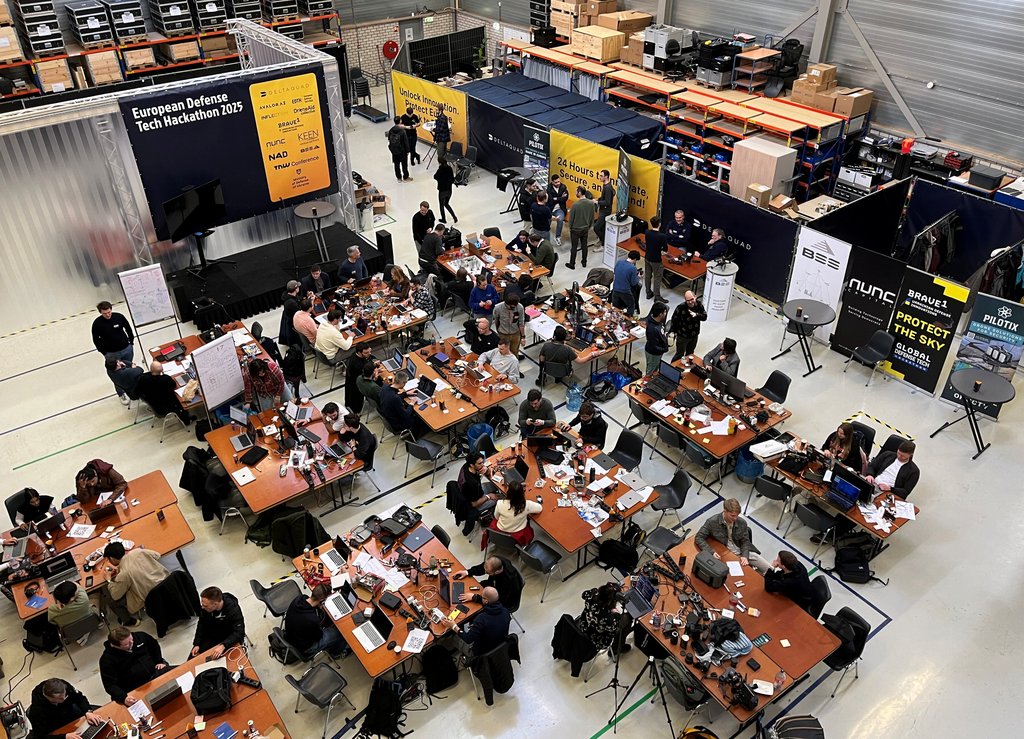The modern battlefield demands a new paradigm of innovation. The traditional, years-long cycles of defence research and development are being compressed by the urgent realities of the war in Ukraine, giving rise to a more agile, collaborative, and mission-driven model. Across Europe, a new ecosystem of hackathons, accelerators, and collaborative platforms is emerging, channeling the continent's brightest engineering and technical talent towards solving Ukraine's most critical defence challenges. This movement is not just about creating new technology; it's about fundamentally changing the speed and focus of defence innovation itself.
A prime example of this new model in action is the upcoming
European Defence Tech Hackathon, returning to Copenhagen from August 29-31, 2025. This event encapsulates the spirit of the new innovation ecosystem, serving as a powerful case study in how collaborative platforms can directly support Ukraine's security needs.
The Hackathon Model: A Crucible for Rapid Solutions
The European Defense Tech Hackathon will bring over 100 top hackers, engineers, and builders to the Technical University of Denmark (DTU). What sets this event apart is its clear and urgent mission: to develop tangible solutions for "real challenges from our partners in Ukraine, EU and NATO". The direct involvement and support of the
Ukrainian Ministry of Defence ensures that the problems being addressed are not theoretical but are grounded in the immediate realities of the frontline.
Participants will tackle a range of Ukraine's most pressing technological hurdles, including:
- Counter-Drone Systems: Innovating new methods to defeat the ever-present drone threat.
- GNSS-Denied Navigation: Creating solutions for assets to operate effectively when GPS is jammed.
- Electronic Warfare: Developing novel capabilities to dominate the electromagnetic spectrum.
- AI-Driven ISR: Using artificial intelligence to rapidly analyze intelligence, surveillance, and reconnaissance data.
- Mine Clearance: Designing new tools and methods to address the immense challenge of landmine contamination.
The goal is not just to generate ideas, but to propel prototypes toward deployment with the help of real-world feedback from mentors.
Part of a Wider Pan-European Innovation Ecosystem
Crucially, the Copenhagen hackathon is not an isolated event. It is a key node in a larger, interconnected network of organizations dedicated to fostering defence innovation. The event's list of supporters reads like a who's who of this new ecosystem.
- Key Industry Partners like Helsing, a leading European AI and defence company, provide deep technical expertise and mentorship.
- Academic Hubs such as DTU and its associated labs, like DTU Skylab and the Danish Chips Competence Centre, provide the physical space, equipment, and research foundation for innovation.
- Collaborative Platforms like Defense Innovation Highway | DIH
- and Inflection.xyz act as connective tissue, bringing together talent, capital, and government needs.
- Supranational Accelerators like NATO DIANA, listed as a similar page, represent the next step for promising ideas, offering a structured path to development and funding.
- National Clusters like Ukraine's own Brave1 work in parallel, fostering domestic talent that can then engage with these international platforms.
This "ecosystem approach" ensures that the energy and ideas generated at an event like the hackathon do not dissipate. Instead, they are channeled into a pipeline supported by a network of institutions that can help refine, fund, and ultimately field these innovations.
The Strategic Impact for Ukraine's Defence
This new model of mission-driven, collaborative innovation offers tangible strategic benefits for Ukraine. It allows for a form of technological "crowdsourcing," where diverse minds from across Europe can apply their skills to problems that might otherwise be siloed within traditional defence establishments. It shortens the innovation cycle dramatically, reflecting the battlefield's demand for rapid adaptation.
Furthermore, it builds a robust, international community of technologists personally invested in contributing to Ukraine's security. This "human interoperability"—the relationships and shared understanding built between engineers, soldiers, and policymakers—is as valuable as any piece of hardware. As one co-organizer noted, this event is "shaping up to be the most mission-driven EDTH yet," providing a "real opportunity to move the needle on defence innovation".
The Future of Defence Innovation
The shift towards collaborative, high-tempo innovation platforms like the European Defense Tech Hackathon is a defining feature of the current era. These events are more than just weekend competitions; they are a vital component of a resilient, pan-European defence innovation base. They represent a shared commitment to harnessing our best and brightest talent to develop the capabilities needed to protect our collective security. For Ukraine, this rapidly expanding ecosystem is a critical force multiplier, ensuring a continuous flow of cutting-edge ideas and technologies from the lab to the frontline.

.svg)


